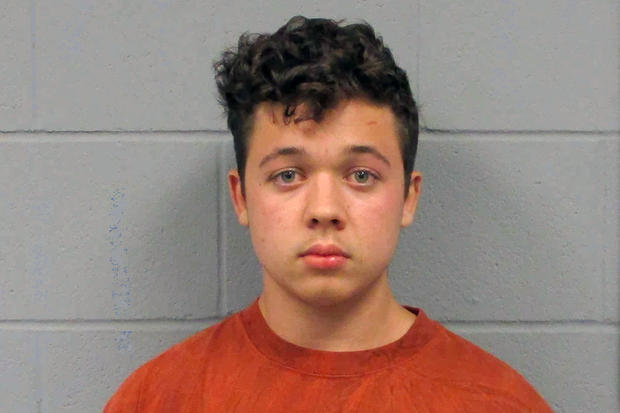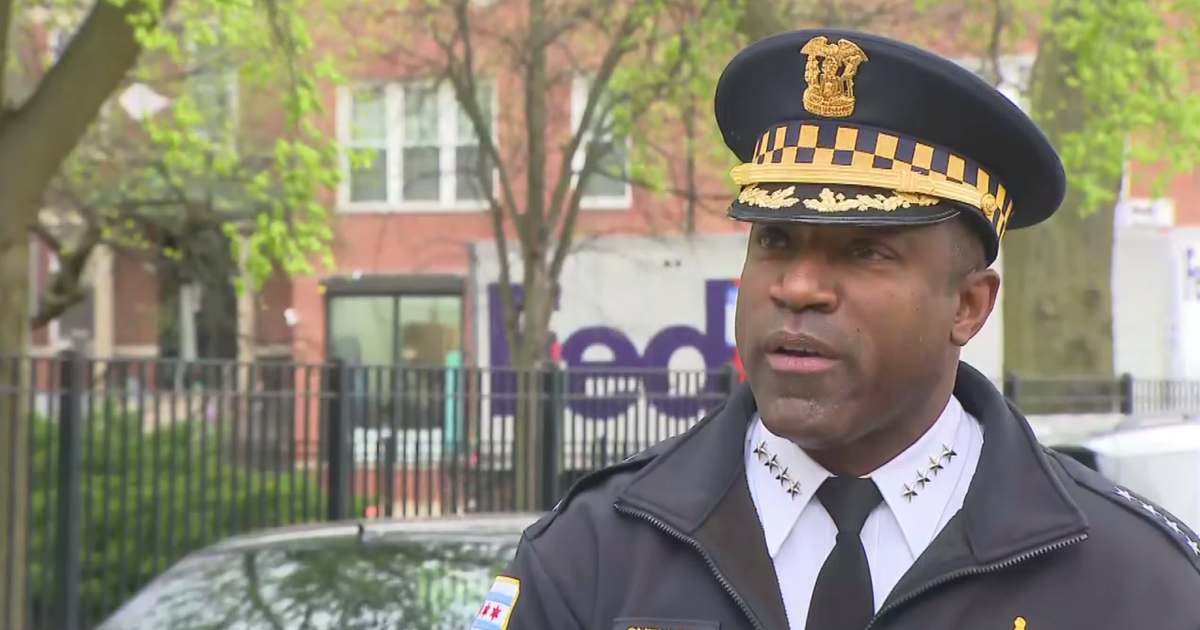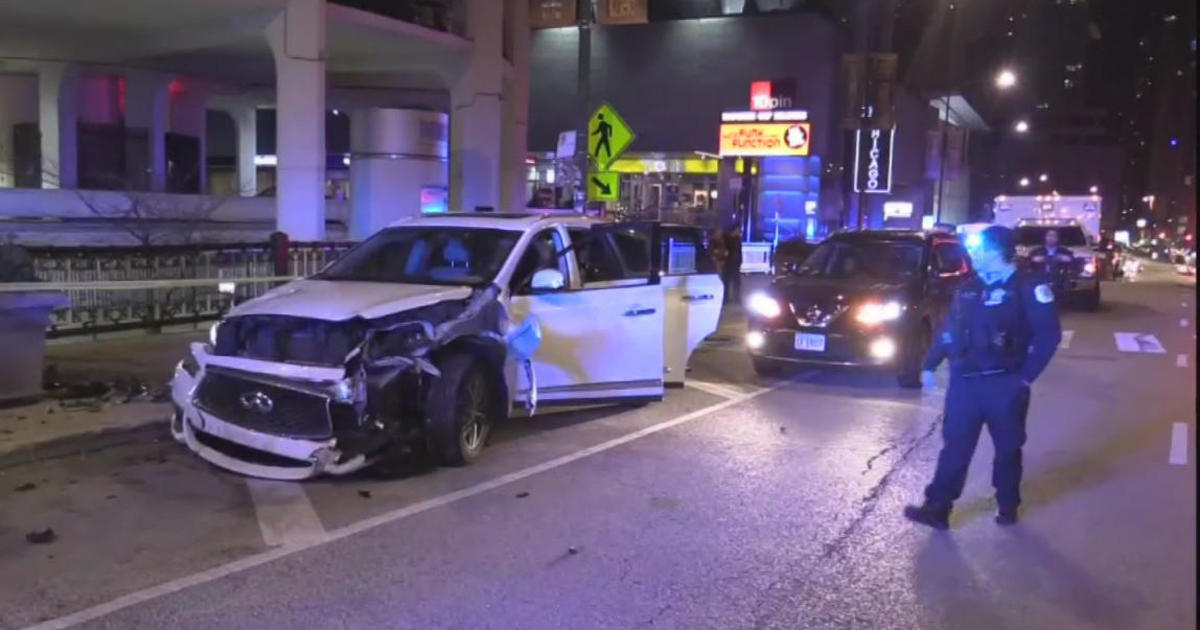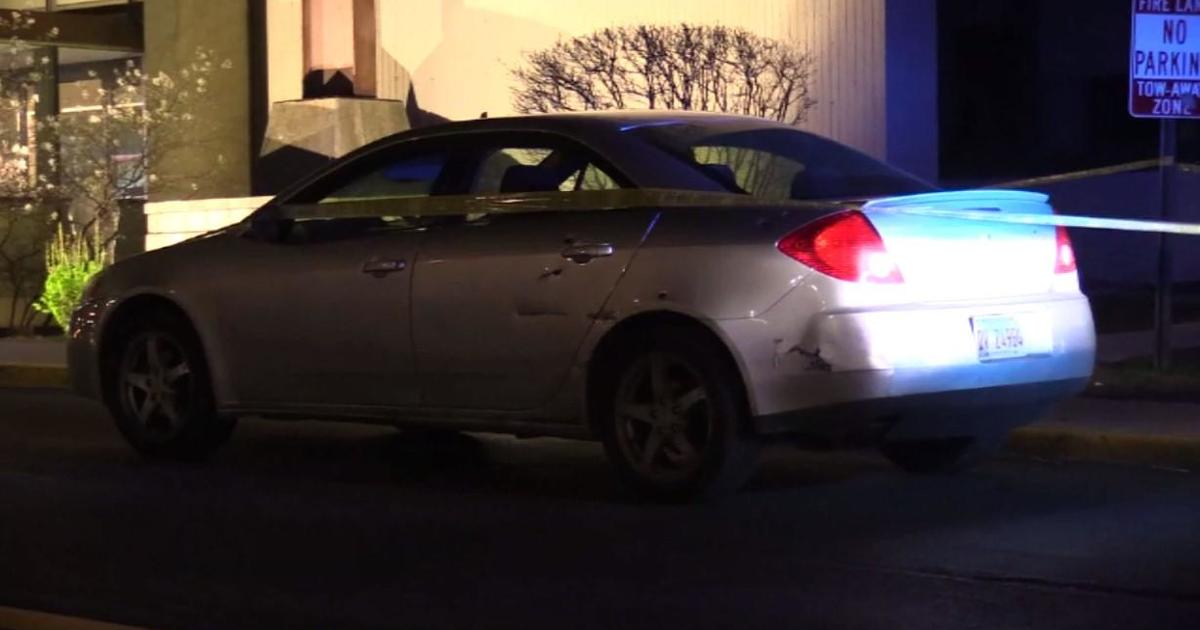Attorneys For Jacob Blake File Lawsuit, Claiming Kenosha Officer Rusten Sheskey Shot Him When He Posed No Threat
MILWAUKEE (CBS) -- Attorneys for Jacob Blake filed a lawsuit Thursday against Kenosha, Wisconsin police Office Rusten Sheskey – claiming Sheskey attacked and shot Blake unprovoked last August in an incident that led to days of protests and unrest.
The lawsuit claimed that Sheskey shot Blake after he had dropped a knife on the floor of his vehicle and was just trying to sit down in the driver's seat.
[scribd id=500337280 key=key-duevX3PICUh9c9iNs6dg mode=scroll]
On Aug. 23, 2020, Sheskey, who is white, shot Blake, 29, who is Black, seven times. Blake was left paralyzed from the waist down.
In the lawsuit, attorneys for Blake said he was at celebrating his son's eighth birthday at a home on 40th Street in Kenosha, on invitation from Laquisha Booker, who had been described previously as Blake's fiancée.
After a quarrel between Booker and a woman who lived nearby, Blake decided to leave with his two sons to avoid the confrontation, the lawsuit said.
Around 5:11 p.m., Booker called Kenosha police and said she had allowed Blake to come to the home, but he "wasn't supposed to be there," the lawsuit said. Sheskey and other officers were sent to the home as Blake was putting one of his sons in the back seat of a Dodge sport-utility vehicle, the lawsuit said.
The lawsuit claimed that without announcement that he intended to arrest Blake or any command to put his hands behind his back to be handcuffed. Sheskey grabbed Blake by the wrist and tried to force Blake's arm while Blake was placing is son in the SUV. Blake tensed up his arm and tried to maintain balance by putting his hands on top of the car, the lawsuit said.
The lawsuit claimed that at that point, Sheskey and other officers physically attacked Blake – punching him, choking him, and deploying a Taser on him three times. As Blake struggled to get to his feet afterward, he picked up a folding utility knife that had been dropped on the ground earlier and started walking away from the officers, the lawsuit said.
Blake walked around to the driver's side door of the SUV and put his hand on the door handle, and he never tried to run from the officers, the lawsuit alleged. Blake also did not try to strike any of the officers, point the knife at them, verbally threaten them or anyone else, make any "abrupt physical gestures," or try to start a confrontation, the lawsuit said.
But as Blake walked around to the driver's side of the SUV, Sheskey and other officers followed him with their guns drawn, the lawsuit said. Blake began to open the driver's side door of the SUV with his left hand, at which point Sheskey grabbed Blake's T-shirt and tried to pull him backwards, the lawsuit alleged.
Upon opening the door, Blake dropped the knife on the floorboard of the SUV in plain view of Sheskey, the lawsuit said.
When Blake threw the knife on the floor of the SUV, his left hand was still on the exterior door handle and his right hand was extended away from Sheskey, the lawsuit said. But Sheskey kept pulling on Blake's T-shirt with one hand and fired his gun at Blake with the other, the lawsuit said.
The lawsuit emphasized in its claims that it was not until after Blake had dropped the knife that Sheskey fired seven shots at Blake at point-blank range.
Throughout the time the shots were being fired, Blake was moving away from Sheskey into a seated position and not toward him – as evidenced by the fact that Blake's T-shirt kept getting stretched as Sheskey grabbed it, the lawsuit said. Blake was still motioning away from Sheskey even after Sheskey's seventh shot severed Blake's spinal column, the lawsuit alleged.
At the time, there were multiple witnesses – including four women and a toddler standing in the parkway, the lawsuit said. Blake's children, ages 5 and 8, were in the SUV at the time, the lawsuit said. The people on the parkway could have been hit by Sheskey's gunfire or ricocheting bullets or fragments, the lawsuit alleged.
The lawsuit said Sheskey's gunfire also could have struck Blake's two children in the SUV – as at least one bullet was fired right into the SUV at an angle toward where the children were sitting. The bullet ended up ricocheting and landing outside the drier's side door but only because it was absorbed by a second layer of steel, the lawsuit said.
The lawsuit added that Sheskey shot Blake with a Glock 17 semiautomatic pistol with 9mm Hornaday Luger rounds – hollow-point bullets with a polymer tip that expands on entry to a body so as to "inflict the maximum amount of damage to bone and tissue." Six of the seven rounds ripped into Blake's arms, back, and left side as he sat down in the SUV, and some of them fragmented after striking him, the lawsuit alleged.
"The fusillade of bullets that Defendant Sheskey fired into the body of Plaintiff Blake caused catastrophic injury and paralysis," the lawsuit said. "At least one round fired by ripped through the spinal column of Plaintiff Blake, severing his spinal cord and instantly rendering his fully seated body limp upon impact."
The lawsuit further claimed that after shooting Blake, Sheskey and the other officers were not interviewed by investigators for days – and only after meeting with attorneys and police unit representatives about what the "claimed justification" for shooting Blake would be.
Further, the lawsuit alleged, some officers turned off their audio microphones after the shooting and cautioned each other to remain silent, the lawsuit said.
But Blake was interviewed by investigators right after the shooting when he was heavily sedated in his hospital bed, and he advised investigators to "look at the video" to confirm he had thrown the knife on the floor of the SUV and was trying to sit down when Sheskey shot him – with the assumption that there was body cam video, the lawsuit said.
The lawsuit accused Sheskey of excessive force, "undertaken with malice, willfulness, and reckless indifference" to Blake's rights.
The suit seeks unspecified compensatory and punitive damages.
The narrative in the lawsuit contrasts dramatically with the narrative provided by Kenosha County District Attorney Michael Graveley back in January as he announced no officers would be charged in Blake's shooting.
Graveley said Booker had called police to say Blake would not give her back her keys to her rental vehicle and was afraid he would crash the vehicle as he had on other occasions. He noted that that before the officers even arrived, their dashboard computer had included information about a felony warrant against Blake involving sexual assault and domestic violence.
"That's the evidence that they have as they proceed in the squad car," Graveley said.
Sheskey arrived at the scene with officers Vincent Arenas and Brittany Meronek, Graveley said. At that point, Sheskey reported hearing Booker yell, "It's him! It's him! It's my keys! It's my car."
An officer also reported hearing Blake declaring, "I'm taking the kids and I'm taking the car."
Based on that, the officers identified the situation as a domestic abuse scenario, Graveley said. He said the officers observed that Blake was exhibiting controlling behavior, and Booker had called police because she was powerless in that situation.
Graveley also said Blake exhibited resisting behavior and admitted himself to doing so when he talked to investigators. The prosecutor said officers tried to bring Blake into custody in "multiple ways" that were not seen on the video that appeared on social media the day of the shooting.
Officers tried to direct Blake to the ground, and multiple officers tried to secure him, Graveley said. Blake admitted that an officer tried to handcuff him, but he was able to get up and evade the handcuffs, Graveley said.
Officers also used a Taser on Blake twice – once with a remote hit and once with a direct hit – and it did not have an effect, Graveley said.
Sheskey and Meronek said they had "never seen a defendant before who had as little impact by a Taser as Jacob Blake," Graveley said.
As to the knife, Graveley claimed Blake armed himself with it while actively resisting. Graveley said the officers called on Blake to drop the knife.
Graveley said heskey grabbed Blake's T-shirt as Blake entered the vehicle, with the reasoning, as quoted by Graveley: "I don't know what he's going to do. Is he going to hurt the child? Is he going to take off in the vehicle?"
Graveley said Sheskey also reported concerns that a pursuit of a vehicle with the child inside might follow, or the child might be held hostage.
Blake then opened the door of the vehicle and admitted to switching the hand in which he was holding the knife when doing so, Graveley said.
The prosecutor said Sheskey reported his thought process was, "I can't let him get in that car without being back in harm's way."
Graveley also said while the video does not document it, officers and civilian witnesses saw Blake twist his body and move his right hand toward Sheskey – at which point Graveley claimed Sheskey was still holding the knife.
Sheskey said he did not feel it was appropriate just to fire his gun because Blake displayed a knife or got into the vehicle, Graveley said. The officer said he only resorted to that step and shot Blake seven times after Blake made the motion in his direction with the knife, Graveley said.
Graveley also said while the narrative many have heard is that Blake was shot seven times in the back, an investigator found that was not the case. Graveley said rather, evidence showed Blake had four gunshot wounds in the back and three to the left side.
In terms of the number of shots, Graveley said Sheskey reported he fired until Blake dropped the knife – by contrast to Blake's attorneys' claim that he had already dropped the knife before Sheskey fired.
The Blake shooting sparked a wave of protests in Kenosha and across the country. There was also large-scale unrest in Kenosha during which several buildings were set on fire.
Kyle Rittenhouse, then 17, is accused of two fatal shootings during the protests in Kenosha.
Rittenhouse is charged with homicide and attempted homicide for fatally shooting Joseph Rosenbaum and Anthony Huber, and wounding Gaige Grosskreutz on Aug. 25, 2020. He has pleaded not guilty and has been released on bond, and has been the subject of several of his own controversies since.




